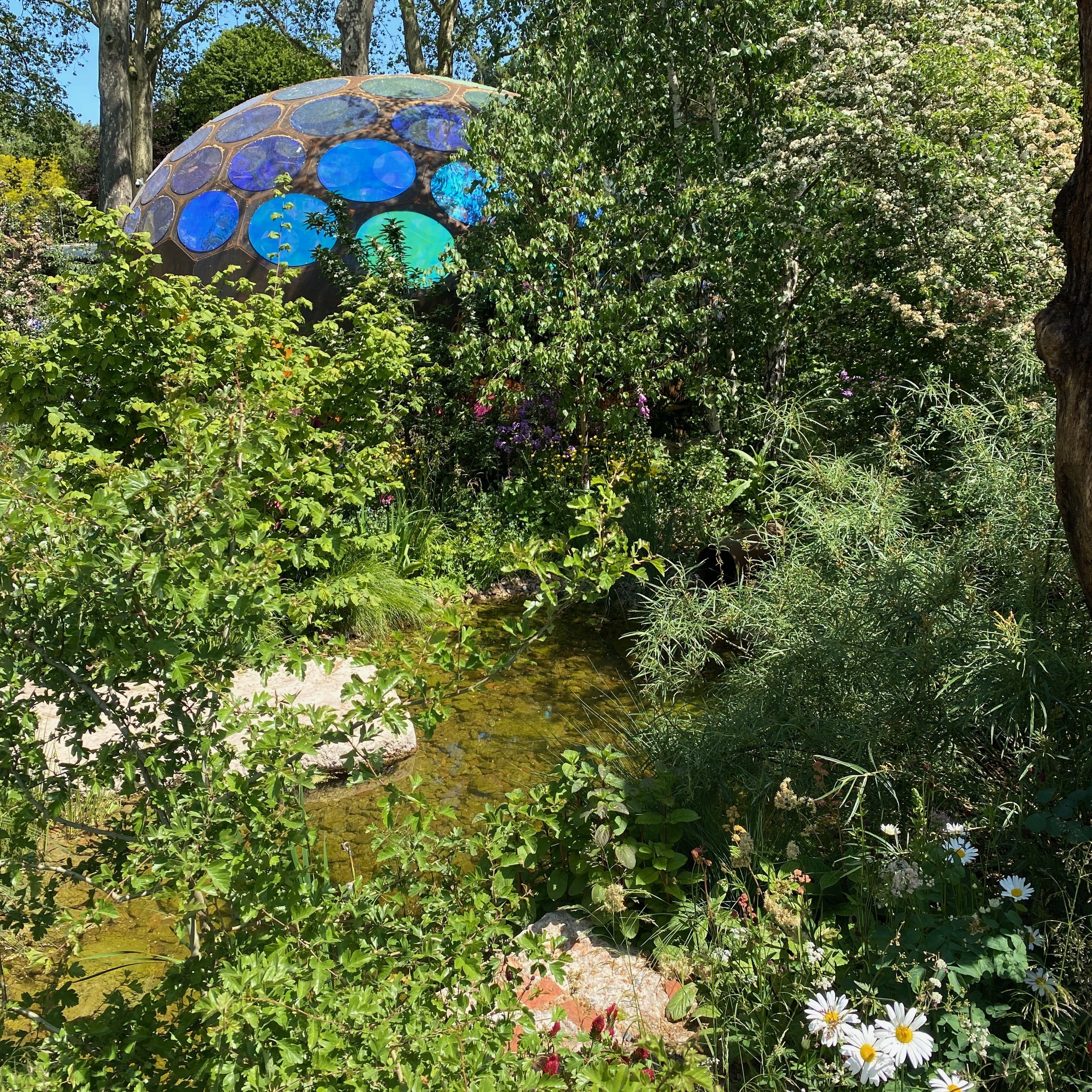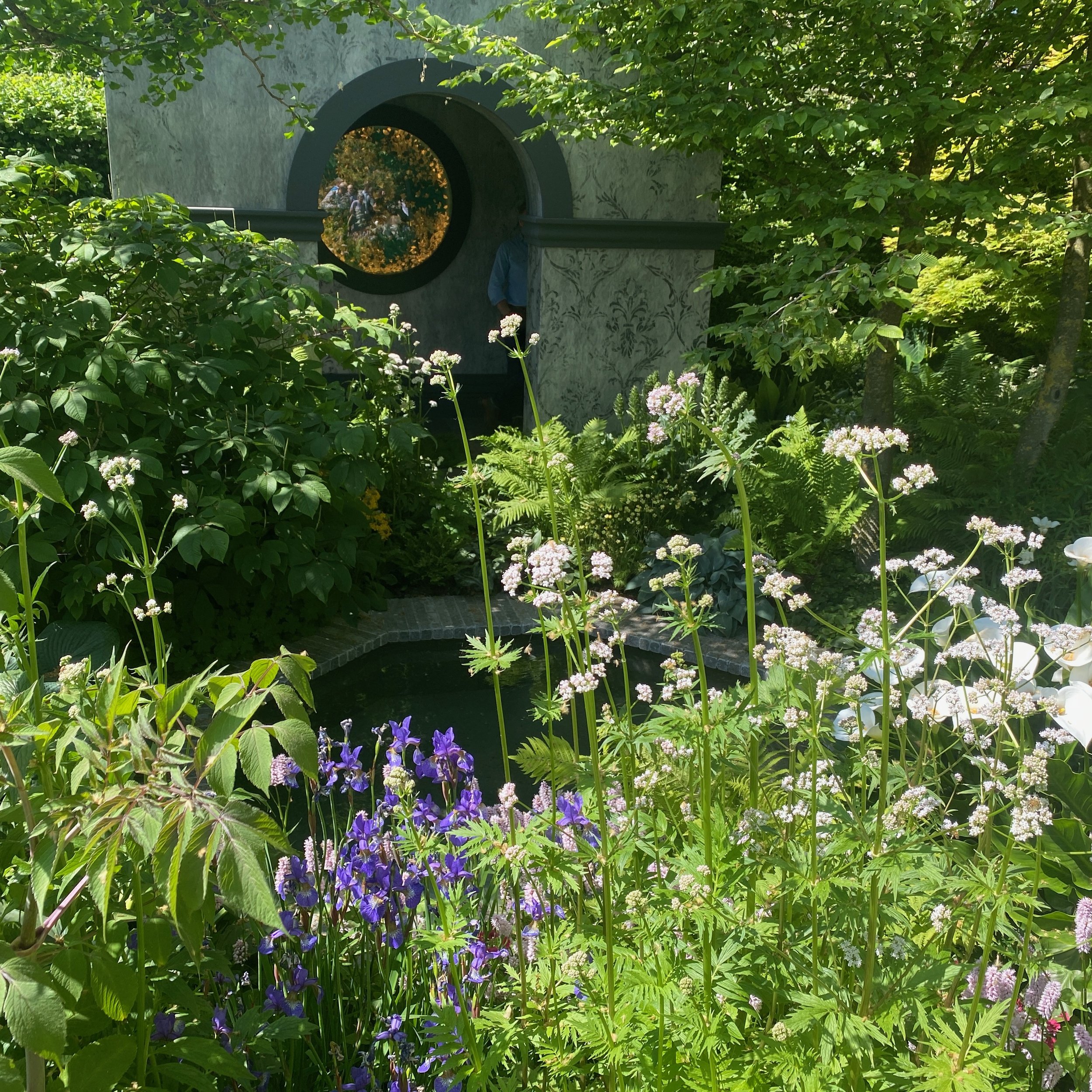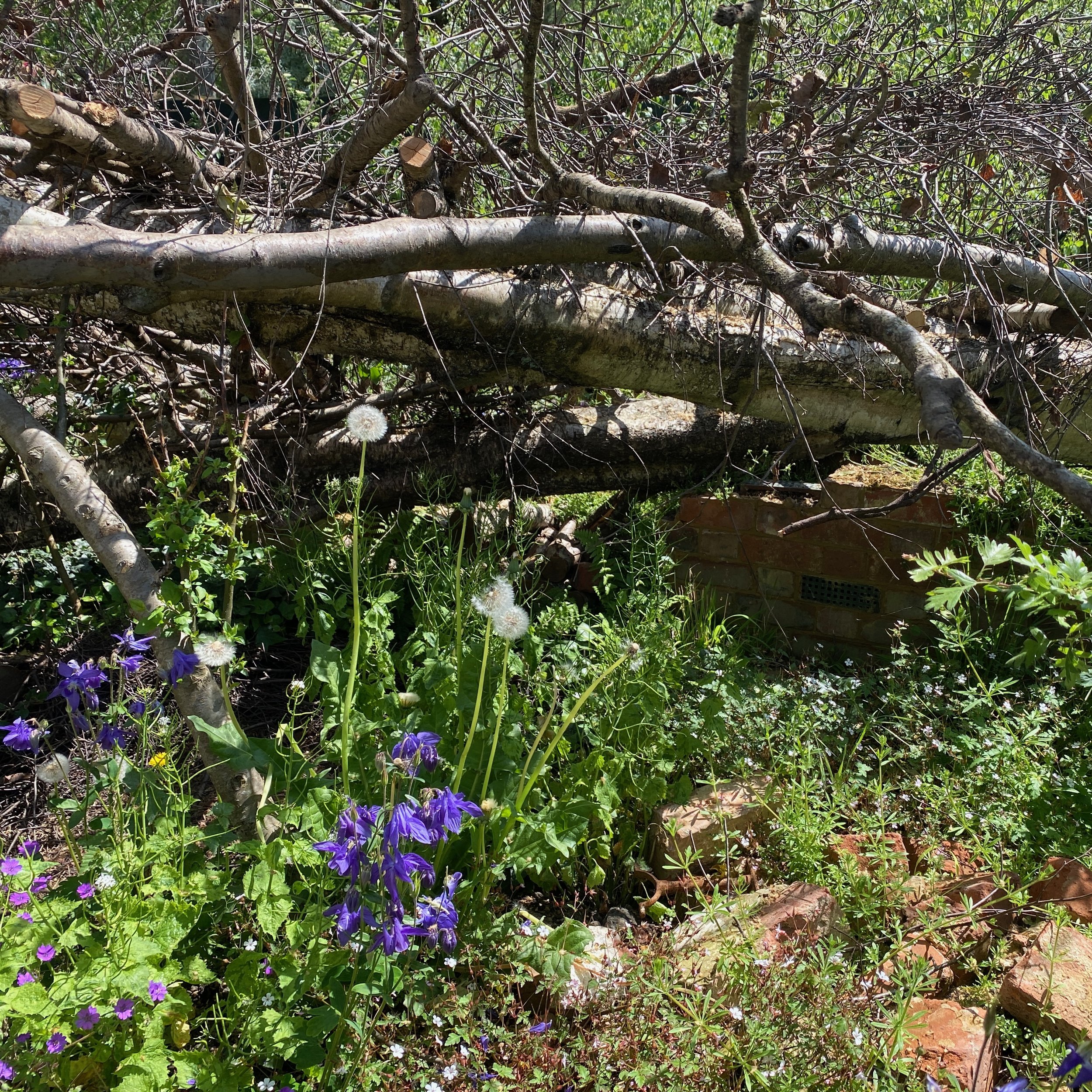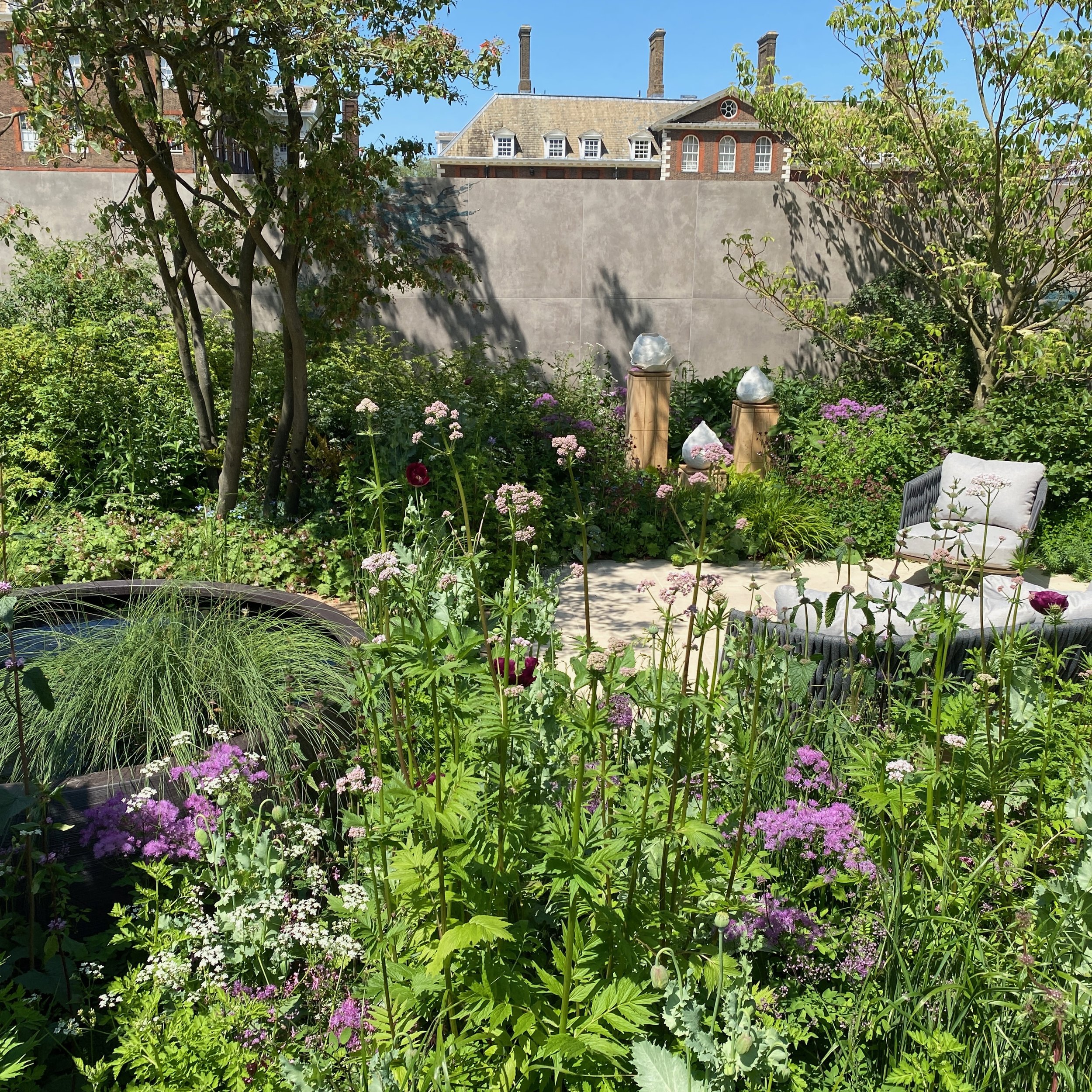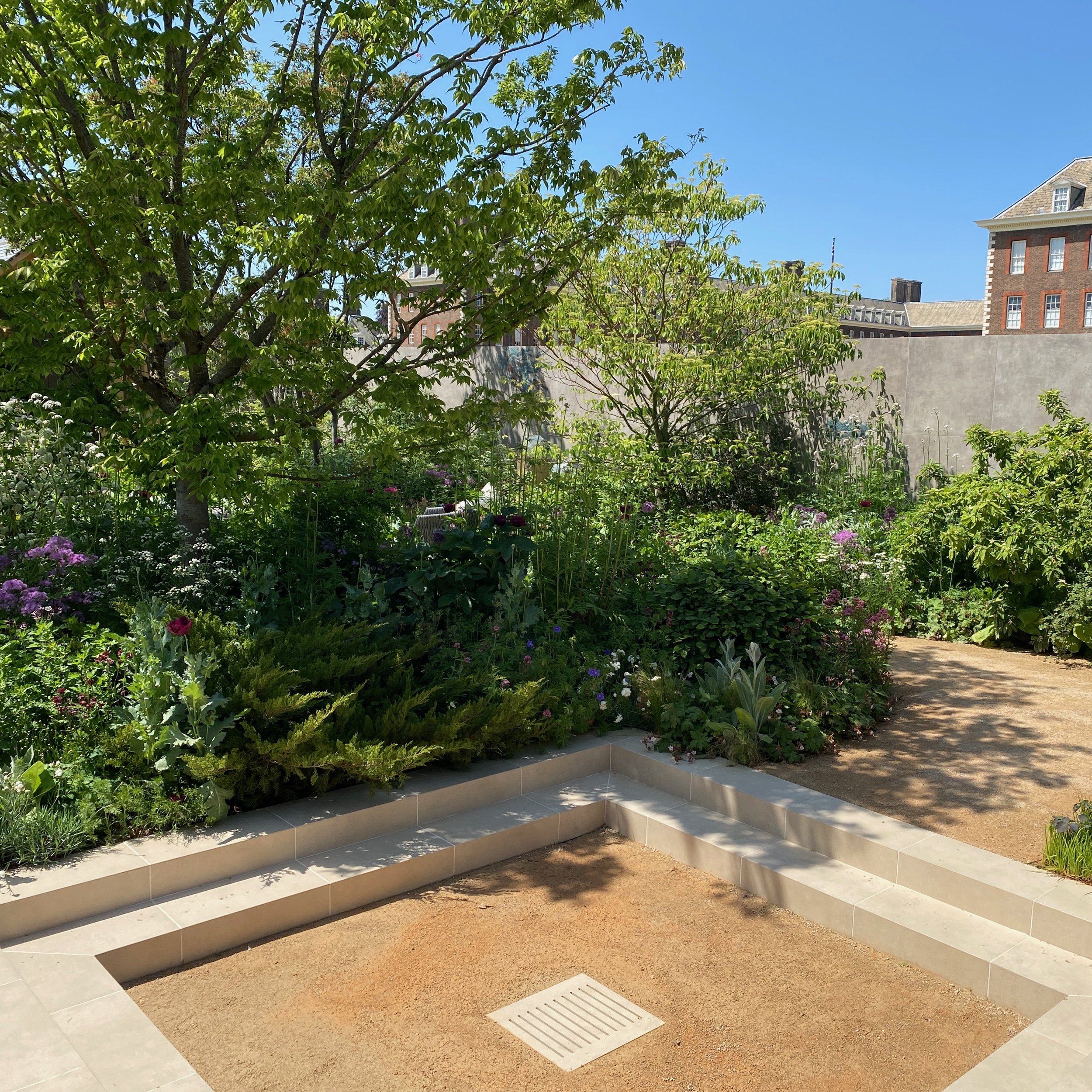Top 5 Chelsea Flower Show 2023 - Top 5 Trends
The main international horticultural event of the calendar is the Chelsea Flower Show, held at the end of May every year in London. Beloved of the media, the BBC, and gardeners alike, this event generates thousands of images and reams of words on its gardens and plants.
Jumping onto this band-wagon here are my top 5 trends from this year’s Chelsea Flower Show….
1 - Biodiversity
Not so much a trend but a statement running through all of the gardens is the importance of using garden design to support biodiversity. It is fantastic that this formed such a core part of the messaging throughout the event. Unfortunately I am slightly worried that for some the over-use of wilderness spaces (weedy and overgrown) might give the wrong impression of what is needed. This is demonstrably not a necessity for increased biodiversity in your garden - instead layered planting (trees, shrubs, perennials and ground cover) and not using pesticides, herbicides, or fungicides is the fundamental basis for biodiversity to increase and thrive. In an event about gardens and horticulture there is always space for a diorama of a landscape but perhaps that should not form the dominant theme in the selection process in the future?
2 - Gardens as sanctuaries
More than ever before the show gardens of Main Avenue incorporated sunken and hidden spaces in the middle of the gardens from which judges (and those invited onto the garden) could experience what I believe to be one of the key purposes of any garden - the provision of peaceful sanctuary…especially precious amongst the heaving crowds of the show. Obviously most will have not been able to experience this (and in some cases these areas were so well hidden that it was hard to discern they were there depending upon the angle you stand at) but I think it’s crucial to many gardens to provide such spaces and so it was great to see them represented so clearly here. The Transcendence Garden was rather more overt in creating a void amongst the mass of the planting - a peaceful space of gently flowing water. I think though that this may have been lost on many visitors through poor placement by the RHS, as this was the first garden most people came to, and the void was at the end of the garden closest to the entrance so they will have experienced the void first. Luckily we approached from the other end first (trying to bypass the crowds) and experienced it properly as was intended.
3 - Garden Surfaces
Small unit paving (such as cobbles, linear pavers, or clay pavers) seemed to predominate over choices in previous years (where traditional paving, cast concrete, or porcelain have been the fashion). Alongside this were a multitude of loose or compacted aggregate surfaces. This is good news from a SuDS (Sustainable Urban Drainage) perspective - with many surface selections therefore allowing water to percolate into the ground instead of running it to drainage systems and is something we should all embrace in our gardens…
4 - Not just the same old colour palette…
Don’t get me wrong there was a lot of the same plants and choice of planting palette at show (this revolving conveyor belt of standard plant choices is often a result of what looks good at the end of May - with a different palette used the year after Covid restrictions were lifted when the show was held in the autumn). However the Nurture Landscapes Garden stood out amongst all of the gardens with its dusky yellows and terracotta tones. This garden shows that you don’t have to follow the crowd and can choose your own plants and colour palette (although for the non-gardener non-standard plants and colours maybe aren’t as widely available and so you may need to plant, sow and divide your own plants in these instances…)
5 - Sustainability
All Show Gardens will face questions of their sustainability (creating a temporary exhibit is clearly less sustainable then creating a garden in its final position) but there really is a spectrum of what is acceptable (indeed all human activity could be deemed as less than sustainable to some). The RHS is still at the start of its journey to sustainability and long may this trend continue…
Sadly ‘Just Stop Oil’ protestors also chose to highlight their cause on the Brewin Dolphin Garden and their orange die was still visible on the loose surface when I visited on Friday. This was a great garden (its designer’s best in recent years) and I felt truly sorry for everyone involved in weeks of effort to create something that was then defaced out of context…
There you have it - my 5 top trends from Chelsea Flower Show 2023…
In addition though, there is one additional thought on Chelsea Flower Show that is worth sharing. There were a lot of similar comments that I heard about the Show again this year - from fellow designers and the public alike. That is that all the gardens are so similar to each other, and especially similar to gardens from previous years (especially when it came to the same designers). It is certainly the case that creativity looks to be being constrained by the current judging or selection criteria and that gardens are being created based on a formula of previous success. Indeed the last stand out example of creative originality I experienced at the show was by Christopher Bradley-Hole in 2013…is it controversial to suggest that a new approach is perhaps now long overdue?

